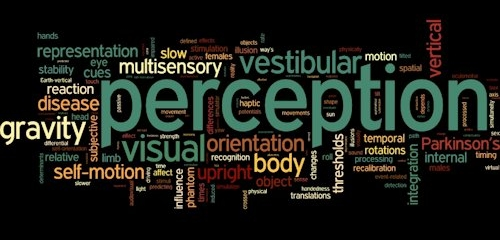
In the Multisensory Brain and Cognition Lab, we combine psychophysical, computational modeling and neuroimaging techniques to measure perceived spatial orientation in complex multisensory environments. This approach identifies the relative influence of vestibular, visual and kinaesthetic cues that underlie spatial perception.
This research is also fun.
In the lab we trick the brain with sensory illusions to figure out how the brain works. You'll often find people in the lab hanging upside down and looking at all sorts of objects with our heads tilted. We believe that a lab that fosters creativity, exploration and collaboration will lead to new and unexpected discoveries.
If you want to join our lab please see our lab opportunities page.
We work with differently abled populations
Working with differently abled populations, this research program is dedicated to determine how different neural circuits in the normal, ageing and diseased brain analyze multisensory information, generate perceptions of the external world, make decisions, and execute movements.
The ultimate goal of this research is to identify sensitive markers of disorientation and disease and test the effectiveness of training, therapeutic and rehabilitation efforts to combat disorientation from nursing homes to the space industry.
Read more about how we translate basic to applied research.
Surprising discovery: vestibular perception is slow
We also use psychophysical and neuroimaging techniques to measure perceived timing of multisensory events. Converging evidence from different experiments on the perceived timing of vestibular stimulation suggests that vestibular perception is slow compared to the other senses.
This result is surprising considering the speed with which the vestibular system detects and responds to self-motion and may have practical applications in calibrating virtual reality environments and vestibular prostheses.
Read more about this surprising discovery.
Gaming and virtual reality research
We use a combination of commercially available and research grade virtual reality equipment to study how the brain integrates multisensory information. We are also involved in game design to create advanced metrics for health quantification.
Read more about our gaming and virtual reality research.